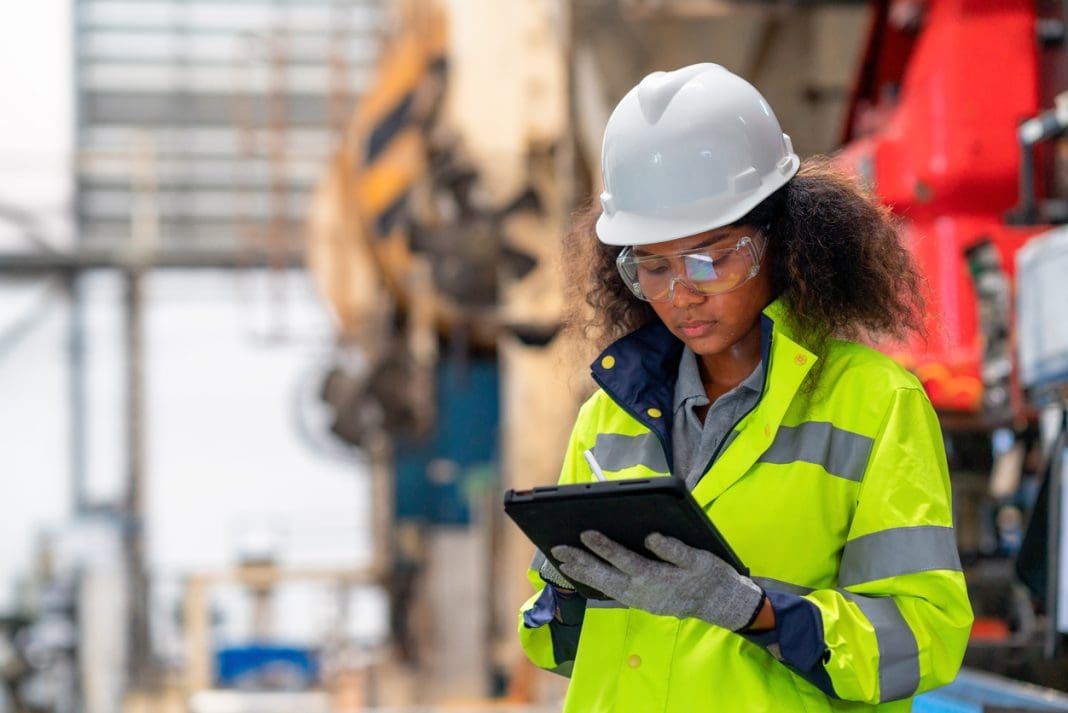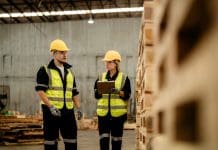UK Business Finance’s Karl Hodson examines how technology can enable greater communication, transparency, and efficiency in the construction supply chain
The complex nature of construction industry supply chains makes them difficult to monitor effectively.
They typically consist of multiple layers of contractors and subcontractors, and when disruptions occur, they can cause lost revenue across the board if not managed efficiently.
A lack of transparency compounds the problems faced by supply chain managers and creates further time and money pressures for construction businesses.
The good news is that technology provides much-needed support in this vital area.
Largely influenced by pandemic-related difficulties and global shortages of raw materials, construction has begun to embrace the benefits of technology to operate more effectively in challenging circumstances.
Why use technology in construction?
Managing the complicated supply chains inherent in construction requires close monitoring of multiple elements, including materials and people from consultants to specialist subcontractors.
Project bottlenecks can develop quickly when raw materials shortages and delivery issues are present, jeopardising profits for all involved. Technology offers a route to collaboration and integration of the entire supply chain, making monitoring easier and more effective.
Although by no means the only industry affected by supply chain crises, the wide adoption of technology in construction has catalyzed change.
What technology is available to construction companies looking to streamline and automate their systems?
Leveraging the power of automation
Supply chain automation software improves efficiency across all elements of construction supply chains, from managing materials and procurement to delivery scheduling and warehousing.
Effective supply chain monitoring helps with the consistent movement of materials to their destination on time and within budget, but also managing and connecting project stakeholders, including manufacturers and subcontractors.
Automating the construction supply chain reduces the manual input that was previously required, and subsequently the likelihood of human error. It facilitates improved workflows and productivity and can be used at various stages, including:
- Inventory: automatic reordering of materials
- Transportation: assigning the most suitable routes and shipping methods
- Warehousing: ordering warehouse equipment to deal with shipped orders
- Overall administration: automatic processing of invoices and other financial paperwork using data provided in purchase orders
Tracking supplies and materials
The Internet of Things (IoT) is a network of physical devices that can help any industry and has existed for many years. With construction, it has produced devices that monitor the progress of supplies and raw materials through the supply chain journey.
Importantly, these trackers can provide real-time notifications on issues such as shipping delays. This allows contractors and subcontractors to take immediate action and prevent bottlenecks further up the line by rerouting or choosing a different carrier.
Construction firms can also track the equipment they have on-site to better prepare for upcoming projects and reduce unnecessary downtime, as well as tracking fleet vehicle locations to expedite deliveries.
Preventing overload in the supply chain
The ability to produce small-scale models of building projects via 3-D printers has been key in helping to prevent overload in construction supply chains. The supply chain can easily become congested with orders of materials that may ultimately prove unsuitable, but this type of technology helps to mitigate that risk and increase efficiency.
A 3-D printed model reveals any flaws in the design and highlights where changes may be needed. This means amendments can be made before ordering the materials and a new model printed until all are happy with the scaled-down preview.
A further technology that offers a similar benefit is virtual reality (VR), whereby users wear goggles or headsets to view proposed buildings digitally.
Again, it prevents overloading the supply chain with unnecessary or inappropriate orders.
Engendering trust within the supply chain
A transparent and collaborative supply chain encourages trust – an element that is difficult to achieve without the help of technology. Blockchain provides a digital platform that allows all members of the supply chain to process and act upon shared information.
It drives confident decision-making by effectively monitoring supply chain movements and interactions in real-time, providing a time-stamped history of transactions that cannot be changed.
Blockchain can also support and integrate with other technologies, such as the Internet of Things, and provides a foundational digital infrastructure that tackles historic construction supply chain inefficiencies.
Procurement and shipping are just two areas that can benefit from blockchain technology.
As far as procurement is concerned, the certifications that confirm the quality of construction materials can be viewed using blockchain. The movement of goods can also be tracked to provide a trustworthy record of supply chain transactions with time-stamped updates that provide traceability if needed.
What are the benefits of using technology to monitor the supply chain?
Improved productivity
An efficient supply chain significantly improves productivity. By using technology, materials can move to their destination largely unimpeded by problems, resulting in projects delivered on time and within agreed budgets.
Less disruption due to boosted connectivity
Construction supply chains not supported by technology are disjointed and more likely to experience disruption. Technology provides real-time connectivity between parties so that issues can quickly be resolved.
Stand out in the market
By adopting new technologies and modernising operations construction companies can stand out in a crowded market. They are able to deliver better customer service and increase profits using an efficient streamlined business model.
Collaboration throughout the supply chain
Collaboration is at the heart of an efficient supply chain and underpins all the other benefits of using technology in construction. Having access to real-time data and information, whichever stage of the supply chain a company lies, speeds up ordering and delivery.
Technology and collaborative supply chains
Technology provides a route away from inefficiencies in the construction industry, and in particular, helps project stakeholders to monitor their supply chain from beginning to end effectively.
It means issues with shipping and delivery, which commonly extend the completion date of construction programmes, can be quickly overcome. Construction firms benefit from connected supply chains that give them a competitive advantage, and the industry as a whole can only gain from being perceived as more trustworthy and transparent.
Karl Hodson

















